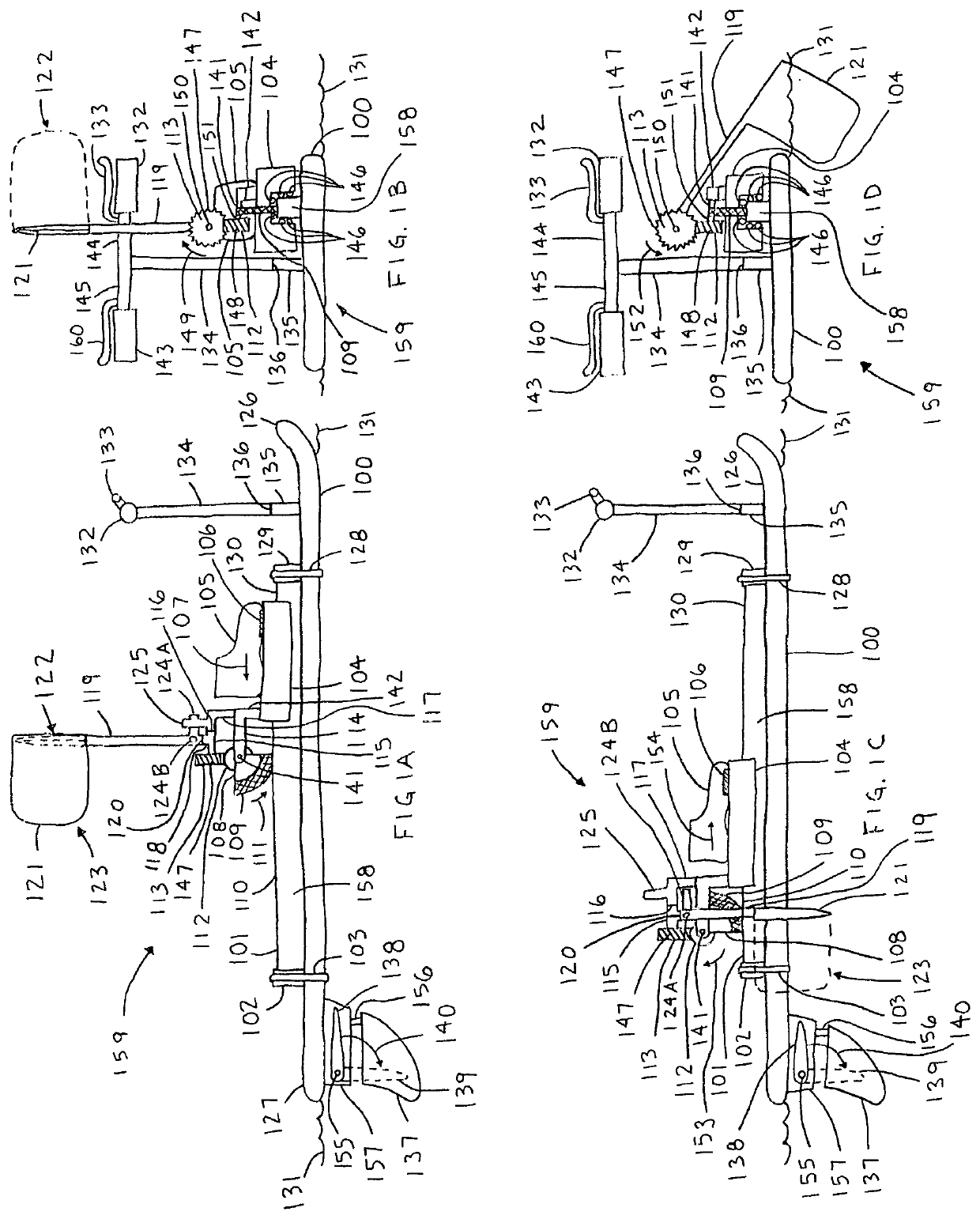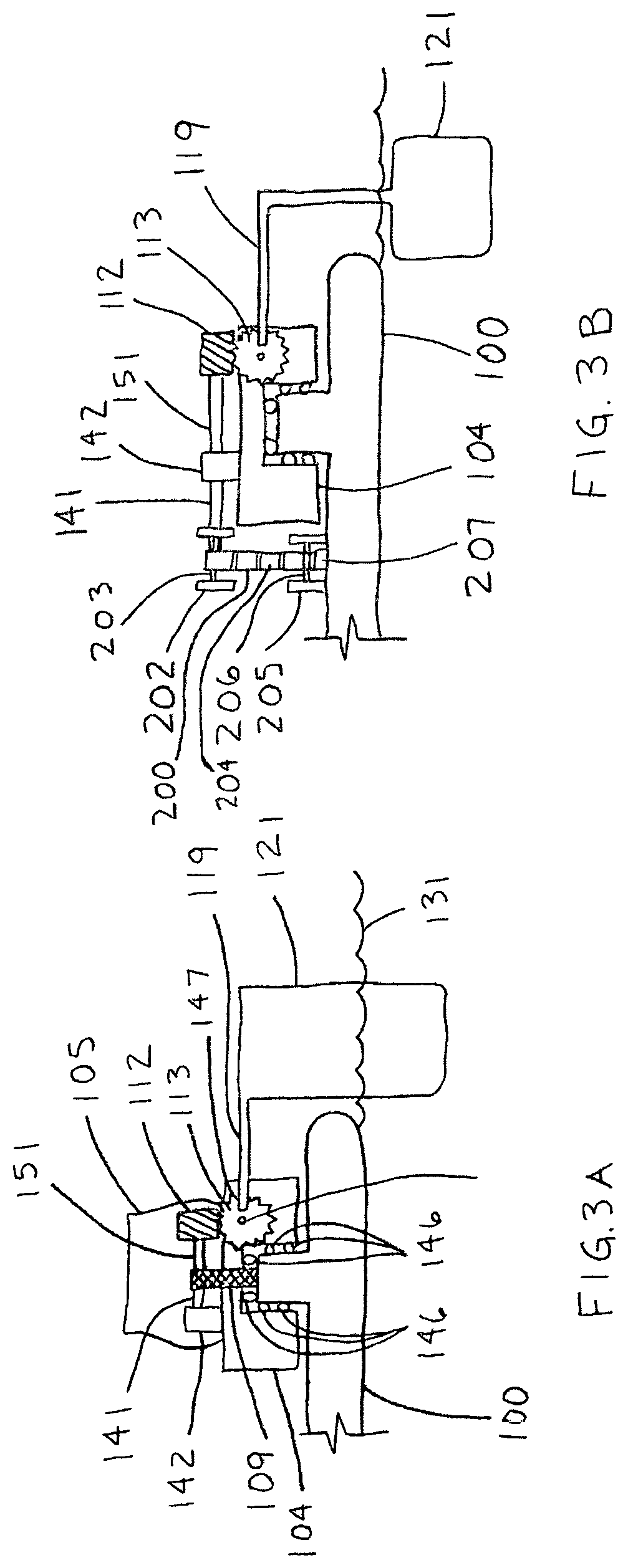Personal watercraft
a technology for watercraft and personal water, applied in the field of personal watercraft, can solve the problem that the hobie eclipse does not provide separate flotation devices, and achieve the effect of preventing drag
- Summary
- Abstract
- Description
- Claims
- Application Information
AI Technical Summary
Benefits of technology
Problems solved by technology
Method used
Image
Examples
second embodiment
[0127]FIG. 2B provides a second embodiment for the sector, where a sector 200 is capable of rotating about the axis 141 as the axis 141 translates parallel to the rail 110. The axis 141 is supported by a carriage (not shown in FIG. 2B) that is supported by the rail 110, where the carriage is capable of translating relative to the rail 110. The sector 200 comprises an engaging portion 201 for engaging with the top portion 110 of the rail 158. Any convenient means may be used to engage the engaging portion 201 of the sector 200 with the top 110 of the rail 158. For instance, the engaging portion 201 may include an elastic region, such as rubber, that grips with the top 110 of the rail 158 as the axis 141 translates parallel to the rail 110.
[0128]As shown in FIG. 2B, sector 200 comprises rotary members on each end, such as wheels, cylinders, and the like, that rotate when in contact with the rail 110 or a shoulder of the rail 110. A first rotary member 202 rotates relative to the secto...
third embodiment
[0134]FIG. 2C provides a third embodiment for the sector, where sector 200 is capable of rotating about the axis 141 as the axis 141 translates parallel to the rail 110. The axis 141 is supported by a carriage (not shown in FIG. 2C) that is supported by the rail 110, where the carriage is capable of translating relative to the rail 110. The sector 200 comprises an engaging portion 204 for engaging with the top portion 207 of the SUP 100. In this embodiment, the engaging portion 204 may include a region with pinion teeth on the sector 200 that engages with the top rack 207 on the SUP 100 as the axis 141 translates parallel to the SUP 100.
[0135]Engagement comprising a rack and pinion is representative of a family of engaging surfaces. Such engaging surfaces may comprise any convenient engaging surfaces that allow little or no slip between them. Exemplary surfaces may also comprise interlaced protrusions, such as the illustrated rack and pinion, but may also comprise surfaces that enga...
PUM
 Login to View More
Login to View More Abstract
Description
Claims
Application Information
 Login to View More
Login to View More - R&D
- Intellectual Property
- Life Sciences
- Materials
- Tech Scout
- Unparalleled Data Quality
- Higher Quality Content
- 60% Fewer Hallucinations
Browse by: Latest US Patents, China's latest patents, Technical Efficacy Thesaurus, Application Domain, Technology Topic, Popular Technical Reports.
© 2025 PatSnap. All rights reserved.Legal|Privacy policy|Modern Slavery Act Transparency Statement|Sitemap|About US| Contact US: help@patsnap.com



